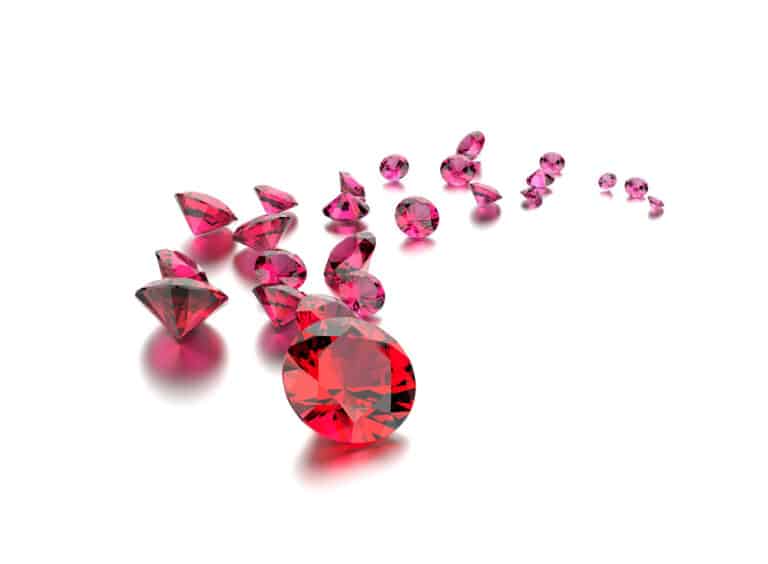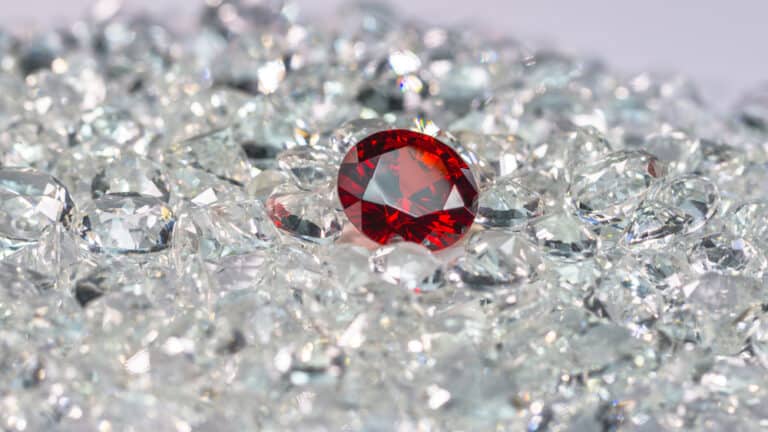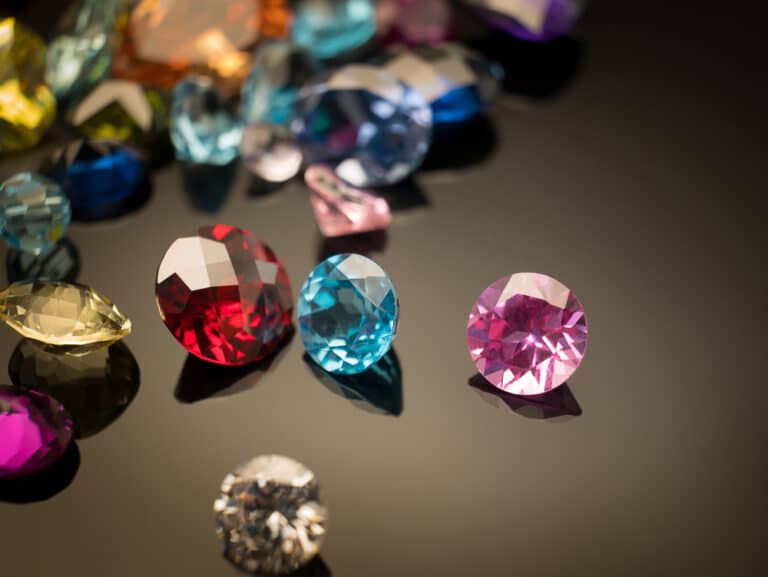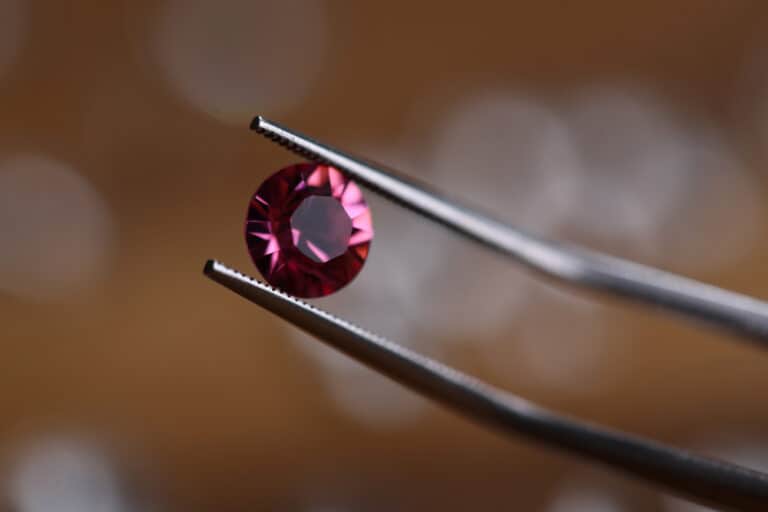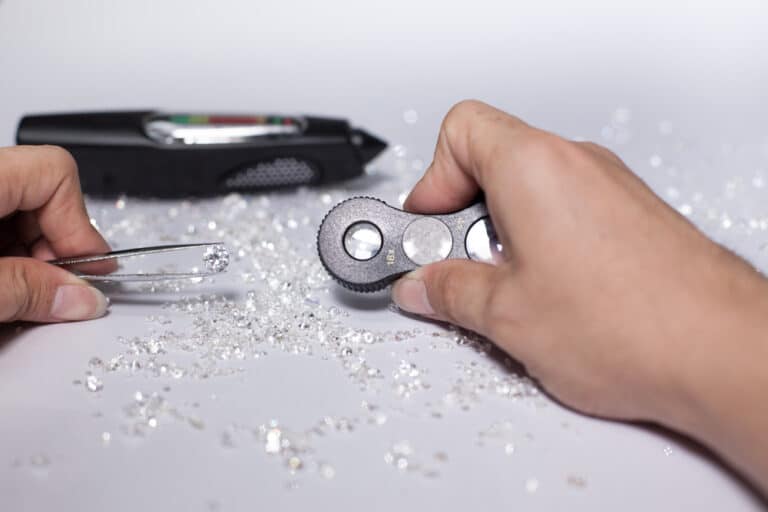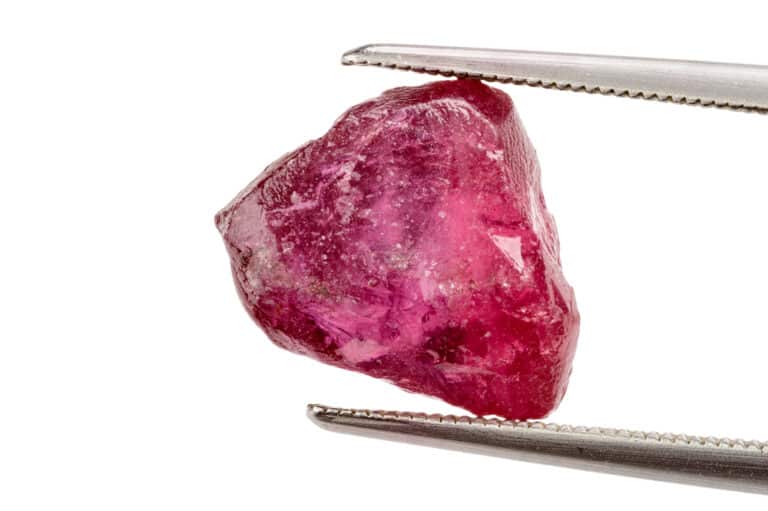It is human nature to be fascinated with the color red. This is why intense, vibrant red rubies are associated with love, anger, and fury. But many red rubies are marketed as heated or unheated stones. The stunning red color of a ruby is intensified by heat, but can you melt rubies?
Rubies can be melted even though they have a high melting point of 3,400° F. Once melted, a ruby does not turn into a molten liquid but rather into a spherical shape due to its crystal formation and surface tension. Rubies cannot be melted together to form a larger stone.
Read on to discover if rubies can be melted, the difference between natural and lab-made stones, and how to identify a fake ruby.
Can Rubies Be Melted?
Rubies are gemstones that are made up of compounds of different elements. These gems are made of aluminum and chromium, both of which can be melted. Rubies can tolerate high heat and are often heat-treated to enhance their color. So if the elements that make up a ruby can melt and a ruby can handle high temperatures, will it melt into a liquid state?
Well, the answer is more complicated than you think, but in short, yes, rubies can melt. Rubies have a melting point of 3,400°F and are the second hardest gemstone on earth. But due to a ruby’s surface tension and crystal structure, it does not turn into molten liquid but instead forms a round spherical shape. So it is possible to change the shape slightly of a ruby while it is in a melted state.
Why Are Rubies Heated?
Heating rubies helps to improve the color of the stone. The heating of the gemstone will bring out the familiar red color associated with a ruby. A raw ruby is usually brown in color, and heating will boost the red color and remove any purple and blue patches that may be present on the stone. Heating will also remove any silk, which are small microscopically needle-like intrusions in the stone.
The heating of rubies is common practice, and it is estimated that around 98% of all rubies, natural and lab-made, are heat treated. To heat treat a ruby, it is heated to around 3300°F (just before melting point) in a Verneuil furnace. The gemstone is typically heat treated before it is cut, but the heating process can be performed to improve the color of older rubies.
Is a Melted Ruby Harder Than An Unheated one?
A heat-treated or melted ruby has the same hardness rating as an untreated stone. A ruby is the second hardest gemstone on earth with a Mohs scale of 9; a diamond is the hardest gem with a rating of 10 on the scale. Rubies are naturally resistant to weathering from wind and water, making them ideal for jewelry.
Rubies are commonly mined in streams or creaks, similar to gold panning. This is due to the natural erosion of the limestone or marble in which rubies can be found. So the hardness of the ruby works in its favor as larger stones are found from this type of mining. In the conventional mining process, where digging and blasting are done, the rubies are often broken, resulting in smaller stones.
Can Rubies Be Melted Together To Form A Bigger Stone?
So we have determined that rubies can be melted but cannot be joined together to form a larger stone. This is due to them being a single crystal formation, but this did not stop people from experimenting with this idea.
In the early 1880s, many rubies appeared on the world gem market that was thought to be natural stone, but after careful scrutinizing, many were found to be manufactured gemstones. These manufactured rubies were given the name “Geneva rubies,” as it was initially thought that was where they originated.
This was the first evidence that a ruby could be lab-made, but no patent or manufacturing process was recorded at the time.
In the early 1900s, a new type of ruby was introduced to the gem market called the “reconstructed ruby.” This was supposed to be rubies that were constructed by melting many smaller pieces of the gemstone together to form a larger stone. These rubies were quite successful at the time, but it was later discovered that it was not possible to melt rubies together.
So, it was later determined in the 1960s that the rubies must have been synthesized from raw chemical materials.
How Are Rubies Synthesized?
Natural rubies are formed in metamorphic rock (rocks formed under high heat and pressure), such as marble or basalt. The rocks form from the intense heat and pressure in the earth’s crust over many years. But lab-made rubies can be easily made in a lab or at home.
Lab-made rubies can be made from aluminum oxide and a small amount of chromium. The aluminum oxide and chromium come in powder form. They are mixed together and heated to their melting point, forming a ruby. The heating process can be done in a furnace, open flame, or with an electrode.
The red color of the ruby can be altered by increasing or decreasing the amount of chromium before melting. When lab-made rubies are made under the right conditions, they are identical to a natural ruby. The lab-made rubies are also heat treated to increase the color and rid the gem of imperfections.
Synthesizing rubies has become a highly profitable business, and factories can be found worldwide that will run over 1000 furnaces to keep up with the world’s ruby demand. Lab-made rubies are often more durable and have a more intense color than natural ones. So, for this reason, synthesized rubies are not frowned upon by the gem community.
Do Rubies Fluoresce
The easiest way to spot a genuine ruby will be to shine a black light (ultraviolet light) on it. A black light will cause ruby to fluoresce a beautiful purple glow. This is true for lab-made and natural rubies, as they have the same chemical composition and physical properties.
This technique will prevent you from purchasing stones resembling rubies, such as “alexandrite or amethyst.” Although the “alexandrite or amethyst “stones have a purpose and a reasonable price tag, they are not actual rubies.

Conclusion
Rubies can be melted but do not turn into a liquid molten state but instead form a round shape. Although rubies can be melted, they cannot be added together to create a larger stone. This is due to the singular crystal structure of a ruby. Rubies can be found as natural and lab-made stones as both have the same chemical composition.
References
- https://stylecheer.com/can-gemstones-melt/
- https://www.gemstone.org/science-of-stones-ruby
- https://www.madsci.org/posts/archives/2004-03/1080030970.Es.r.html
- https://www.gemsociety.org/article/understanding-gem-synthetics-treatments-imitations-part-4-synthetic-gemstone-guide/
- https://en.wikipedia.org/wiki/Ruby

